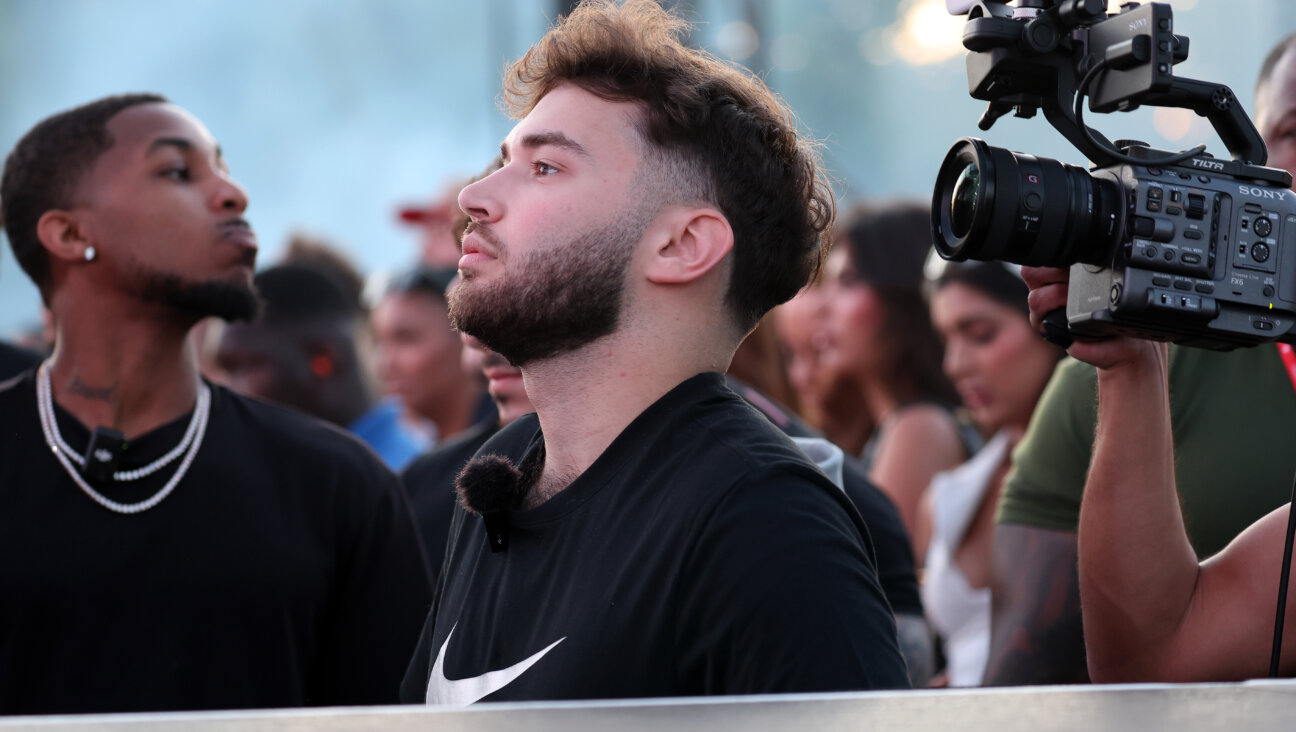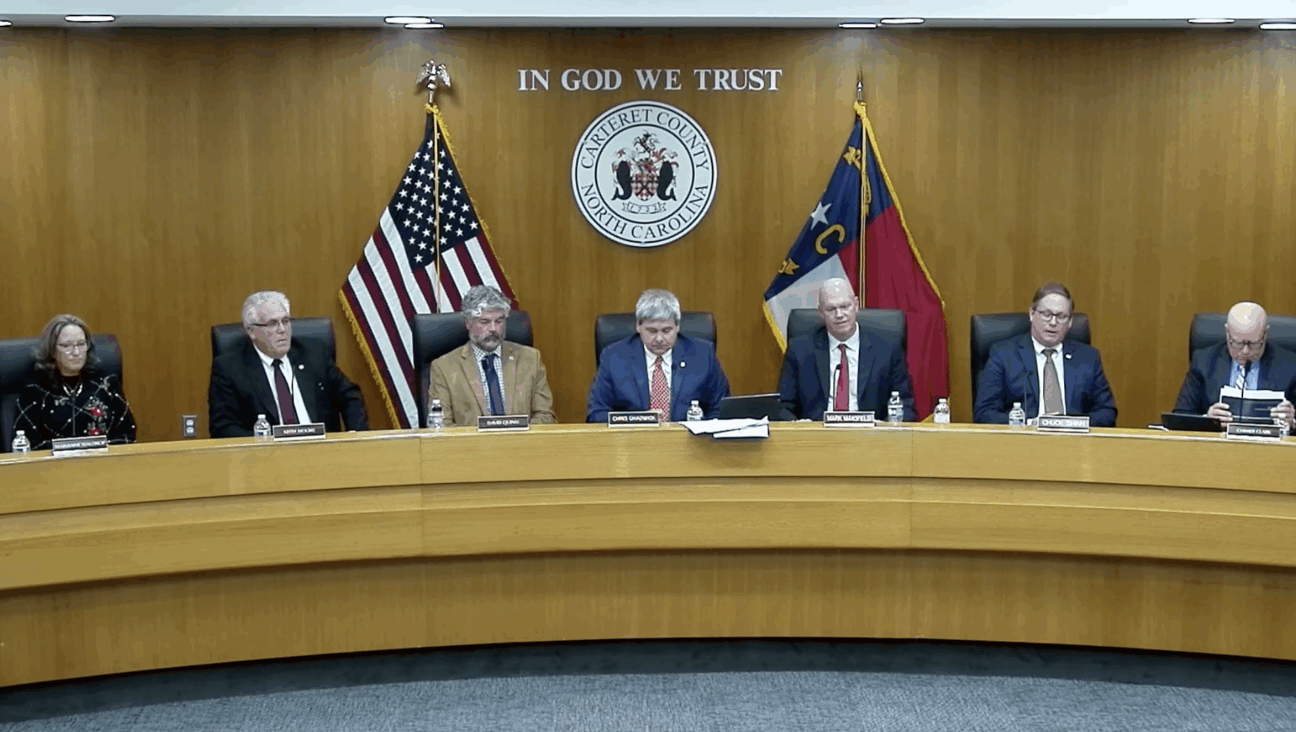Can a kinky new Yiddish musical resurrect a lost art — and one man who got spanked to death?
Mikhl Yashinsky’s zesty ‘Feast of the Seven Sinners’ marries tradition and taboo, with R-rated consequences
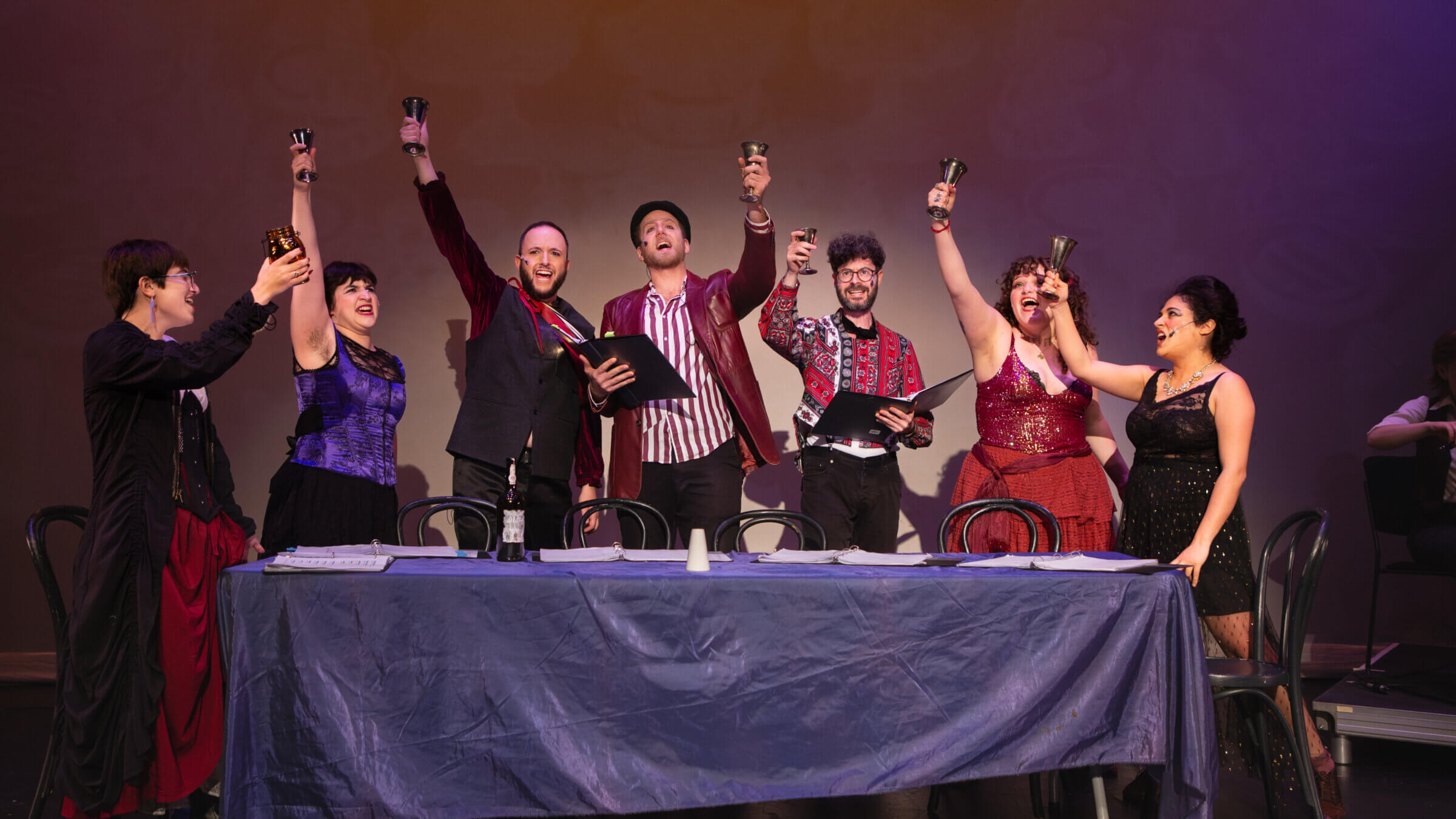
The Seven Sinners say “L’chaim” to their vices. Photo by Basil Rodericks (2025)
It’s been a busy time at the 14th Street Y. There was an orgy, followed by a brawl. Catering was sparse and massively unkosher, featuring an apple-stuffed roast pig as the centerpiece. One man died after accidentally imbibing a love potion that disagreed with his constitution. Another met a violent end after being spanked with excessive rigor.
If that sounds exhausting, imagine it all happening in 90 minutes. Then add some tuneful original klezmer numbers; translate the whole megillah into Yiddish; crowdsource an enthusiastic audience of diverse ages; and you have the The Feast of the Seven Sinners, or Di Sude fun di Zibn Zindikers, a new Yiddish musical. The saucy spectacle ran for three workshop-performances in Manhattan in late June, as part of the 14th Street Y’s LABA program, a fellowship that consummates the marriage of classic Jewish texts and the arts.
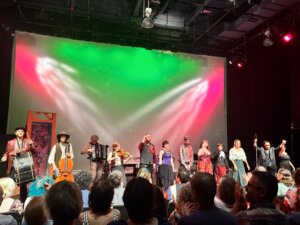
The musical — written by Mikhl Yashinsky, directed by Michael “Mikhele” Leibenluft, and scored by Raffi Boden, Mattias Kaufmann, and Rebecca Mac — operates on a simple premise: On the eve of Yom Kippur in 1897 Vilna, a criminal gang composed of the seven sins incarnate assembles for a lavish, treyf-stuffed banquet at which they can revel in their vices instead of repenting them. The idea of “Seven Sins” may seem startlingly goyish, but the tradition actually exists in Judaism as well as in Christianity: Yashinsky weaves writings on this sinful septet by Vilna Gaon — a renowned Lithuanian rabbi, who died in 1797 — into the DNA of the show, including through his decision to set the scene on the Gaon’s 100th yahrzeit.
But although the musical is rooted in tradition, it sprouts excitingly unorthodox fruit.
The arrival of each new sin at the dinner party often triggers a memorable musical number, such as an operatic strip-tease from Goldetshke (who represents gayve, pride, and is played by Danielle Bendjy). In soprano notes astonishing to the ear and purging to the sinuses, she informs the audience of her latest hobby: Standing naked in the mikveh courtyard, waiting for expectant mothers to gaze on her physique and absorb her beauty into their unborn babies. Proof at last that public nudity actually can be a mitzvah.
But this was mere foreplay compared to the “Sfern Orgazm Valz,” or “Celestial Orgasm Waltz,” the song of Zev, who represents the sin of znus (licentiousness), and is played by Noah Mitchel. Gyrating and thrusting in a way that makes you worry he’s going to dislocate something, Zev explains his world model to the audience: “In the beginning was desire/The first impulse of the world…/Until the Big Bang/Fucked everything asunder/An orgasm that lasts till today!” (In Yiddish: “In onheyb iz geven di lust,/der ershter impuls fun der velt… Biz der groyser zets/T’altsding opgetrent,/An orgazm vos doyert biz haynt!)
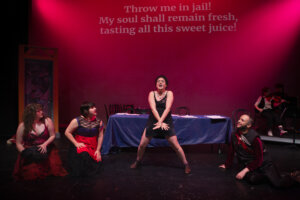
It’s intriguing to wonder what Yiddish theatergoers of 1897 would have thought of the “Sfern Orgazm Valz” — or the corruption of the vidui, the Yom Kippur confessional prayer, which is led at the feast with full-throated welly by Lindsey Bloom, who plays Sotn/Satan. (Satan is proficient in most sins, but specializes in sines-habries, indiscriminate hatred of humanity, in case you were wondering.) Or what would they have thought of seeing Bunim the Tzedakah Collector, played with a bullseye comedic timing and a chilling countertenor by Matthew Shifrin, strapped to a chair and spanked to death by an impassioned Kuntse (kine — miserliness, played by Olive Benito), only to be subsequently resurrected?
“A lot of Yiddish theater is so beautiful, but there was actually a strain of self-censorship in Yiddish literature and theater,” said Yashinsky, the musical’s writer, who also plays Kain (kine — jealousy). We spoke in a chilly room at the Y after a rehearsal a few days before opening night.
“There were certain things that you couldn’t say or talk about too openly. And in this, we are about all kinds of different sexualities and romantic relationships and transgression and darkness of the soul, and wrestling with those things, and celebrating them, and having fun with them.”
Although The Feast of the Seven Sinners is full of boinking and brawling, Yashinsky hopes that audiences will come away pondering deeper questions about rebellion and binaries. Foremost among them: Can defining yourself through sin instead of virtue, and embracing the bad as good, ultimately be as rigid and limiting as the orthodoxy that the seven sinners spend so much time railing against?
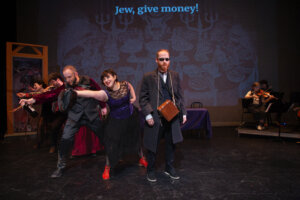
“Maybe the truly transgressive idea is that everything is a mix of more than one thing, and sort of a smashing of those binaries,” Yashinsky said.
Mikhele Leibenluft, the show’s director, hopes that the musical will allow people to sit with “discomfort in terms of what we feel is appropriate behavior, like what is moral, what is not moral.”
If there were ever a place to explore virtue and vice — the light in human nature as well as the darkness — Yashinsky thinks it’s the Yiddish theater, a place where contraries convene and binaries braid themselves into one. I asked him what he meant. In true Jewish fashion, he responded with a parable, a story from the Yiddish poet Moshe Leib Halpern. It goes like this:
“There was once a vulgarian who went to the synagogue on one corner of the street when he wanted to weep, and to a bawdyhouse on the other corner when he wanted to be gay. But once, when he wanted both to weep and be gay at the same time, he put up a theater in the middle of the street that combined synagogue and bawdy house in one.”




